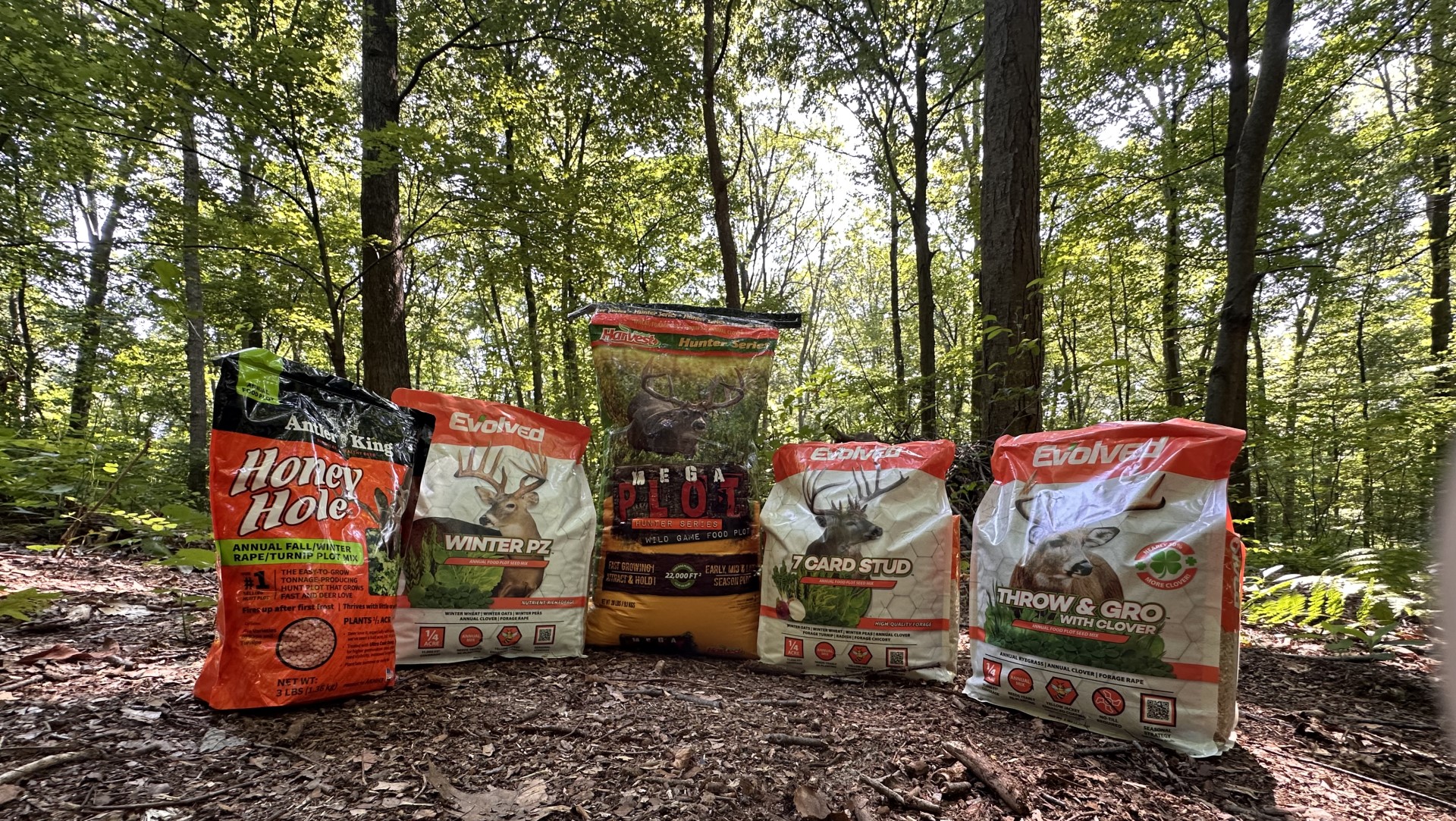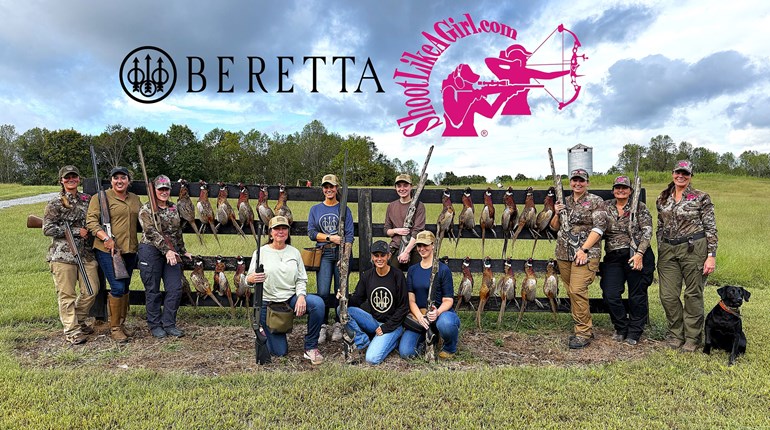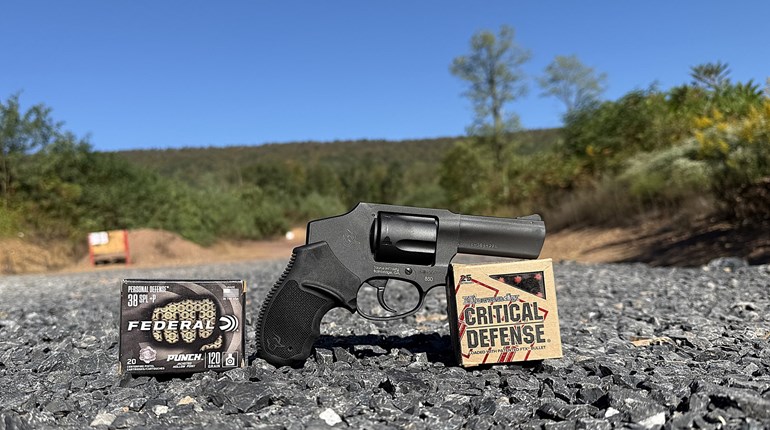
Creating and maintaining food plots is a vital practice for anyone looking to enhance their property’s ecosystem and attract more deer. These plots provide essential nutritional resources, improve habitat quality, and can lead to more successful hunting seasons. Whether you fancy yourself an experienced hunter or a landowner interested in wildlife conservation, understanding the benefits and best practices for everything that goes into establishing these nutritional resources is crucial for success. Read on as we explore why food plots are beneficial to not only deer but a variety of woodland creatures, the most common types to plant, and how and when to plant them effectively for optimal growth and production.
Establishing food plots for area deer offers numerous advantages for wildlife and habitat management. They provide a consistent source of high-quality food, ensuring deer receive necessary nutrients throughout the year. This is particularly important during late winter and early spring when natural forage is scarce. By supplying a well-balanced diet, food plots contribute to better deer health, resulting in improved body condition, antler growth and higher fawn survival rates.
Healthy deer are more resilient to diseases and parasites. Additionally, food plots can be strategically placed to enhance natural cover and create a more hospitable environment for those who feed upon them. They also serve as a tool for managing deer populations by drawing them to specific areas. For hunters, food plots attract deer to designated locations, making monitoring and harvesting more effective, ultimately leading to more successful and ethical hunting practices.
Choosing the right type of plant for your deer food plot is essential. Clovers, such as white and red clover, are popular for their high protein content and palatability. They thrive in various soil types and conditions and provide year-round nutrition. Additionally, clovers benefit soil health by fixing nitrogen levels.
Alfalfa is another high-protein option that attracts deer and provides excellent nutrition, particularly in the growing season, though it requires well-drained soil and plenty of sunlight. Brassicas, including turnips, radishes and rape, are known for their high nutrient density and can attract deer in late fall and winter when other food sources are limited.
Cereal grains like wheat, oats and rye offer reliable food sources during winter months, as these hardy crops can be planted in the fall. Soybeans are a high-protein option that attracts deer. They do require a longer growing season and more intensive management, but provide significant rewards in terms of deer attraction and nutrition. Below are a few of our preferred blends this season:
Evolved Winter PZ
This seed blend is a highly attractive and nutritious mix designed to provide nutritional support late in the season. Featuring a mineral-rich combination of winter wheat, oats, peas, forage rape and more than double the amount of clover for a buffet of greens deer cannot resist. This blend thrives in cool weather and can cover up to a quarter-acre of land. When properly planted, this mix makes an excellent choice for a season-long hunting plot.
Evolved 7-Card Stud
This seed mixture contains a nutrient-rich blend of cereal grains, winter peas, clover, turnip, radish and chicory, providing deer with plentiful foraging opportunities lasting throughout the hunting season and into the warmth of spring. Winter oats, wheat and clover are the first to sprout, serving as an appetizer while radish, turnip and chicory deliver essential late-season nourishment. This blend is versatile and adaptable to various regions, climates and soil types.
Evolved Throw & Gro with Clover
Perhaps a favorite amongst hunters due to adaptability and ease of planting is Evolved’s Throw & Gro Food Plot Seeds. The annual mix of ryegrass, arrowleaf clover and forage rape establishes itself quickly, providing an attractive food source high in protein for deer throughout fall, winter and spring. This highly adaptable blend thrives in various soil types, including moderately acidic ones, with no disking required.
Evolved Megaplot Hunter Series
This game forage blend combines triticale, oats, forage turnips and annual clovers to create a high-protein, nutrient-rich mix that attracts and sustains game throughout the season. Suitable for planting in spring or fall, it provides a diverse range of palatable forage that grows year-round, ensuring a continuous, attractive food source for wildlife.
Antler King Honey Hole
Antler King’s Honey Hole blend is a top-seller, loved for its ability to thrive in challenging conditions, drawing in hungry deer far and wide. This mixture features a variety of rape and turnips, treated with Ultra Coat Orange to enhance germination rates and forage yield. It excels in cool weather, where it has a history of being consumed rather quickly. When planted in late summer or early fall, Honey Hole ensures a bountiful and attractive food source for deer come hunting season and beyond.
How-To
To ensure that your plot is fruitful, proper planning, planting and maintenance are key. Begin by conducting a soil test to determine pH levels and nutrient needs, as most food plots thrive in soil with a pH of 6.0 to 7.0. When in doubt, be sure to reference the back of your seed packaging, as most include optimal moisture content and PH levels for soil when planting.
Select a site that receives adequate sunlight and is accessible for maintenance, avoiding areas with poor drainage or heavy shade. Clear the area of debris, weeds and grasses, and till the soil to improve aeration and seed-to-soil contact. 9Some varieties don't require tilling up the dirt, such as the “Throw and Gro” blend from Evolved.)
Based on the soil test results, apply the appropriate type and amount of fertilizer to enhance soil fertility and support plant growth. Planting times vary depending on the crop type. For cool-season crops like clovers and brassicas, late summer to early fall is ideal, while warm-season crops like soybeans and alfalfa should be planted in spring after the last frost. Follow seed label recommendations for seeding rates and planting depths, using a broadcast spreader or drill for even distribution, or simply scatter by hand-- make sure to spread it evenly, leaving no bare spots.
Regular maintenance includes monitoring for weeds and pests that can compete with your food plot. Use appropriate herbicides and pest control measures as needed. Ensure your food plot receives adequate water, especially during dry periods, as regular irrigation supports healthy growth. Finally, regularly check your food plot to monitor growth and deer activity, adjusting based on observations and changing conditions.
By adhering to these practices, you can create a thriving food plot that enhances the health of the deer that feed from it, as well as improving habitat quality, thus increasing your hunting success. Whether you are a conservationist or a hunter, investing time and effort into your food plots will result in healthier animal populations and a more vibrant ecosystem on your property.







































